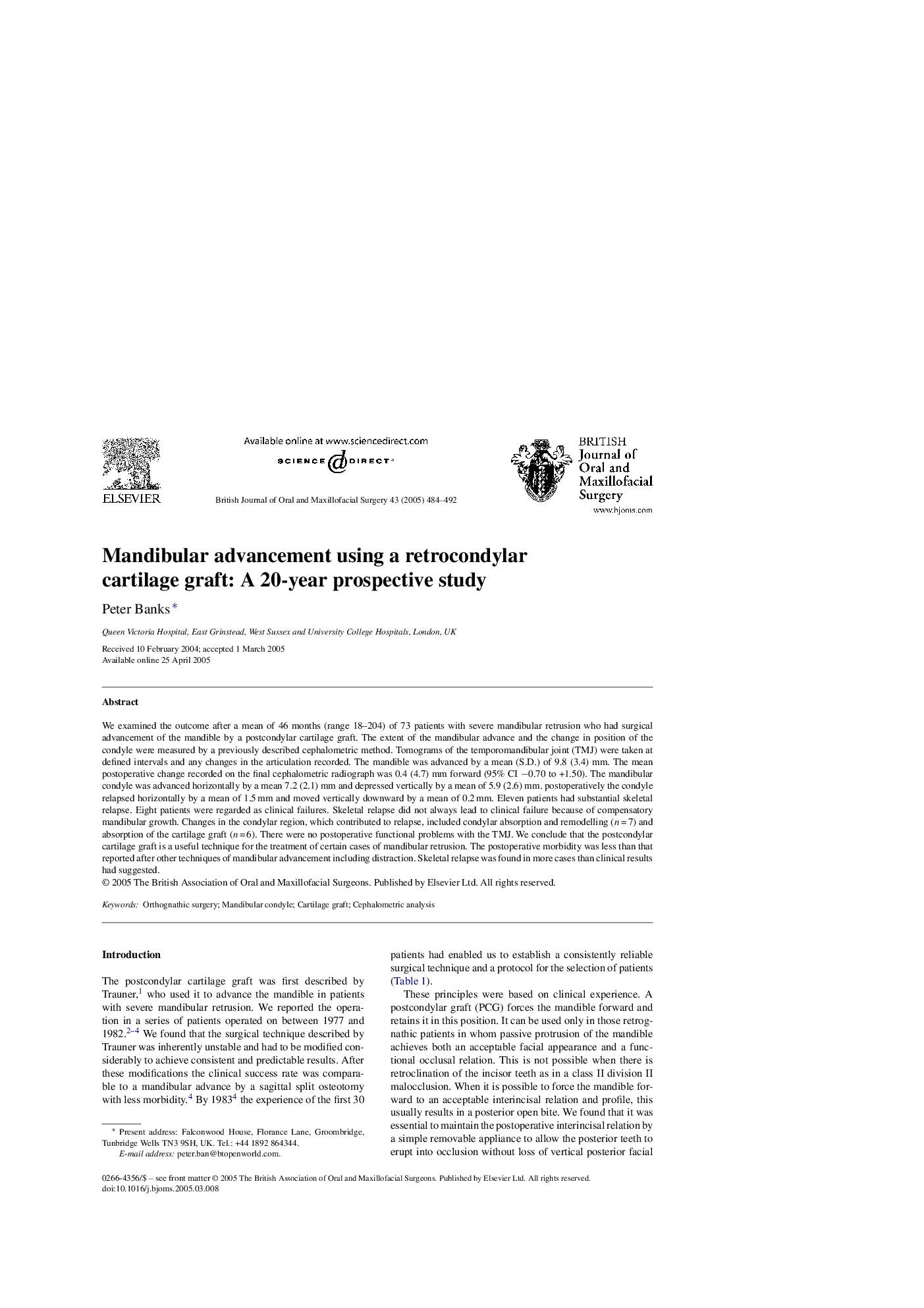| Article ID | Journal | Published Year | Pages | File Type |
|---|---|---|---|---|
| 9998641 | British Journal of Oral and Maxillofacial Surgery | 2005 | 9 Pages |
Abstract
We examined the outcome after a mean of 46 months (range 18-204) of 73 patients with severe mandibular retrusion who had surgical advancement of the mandible by a postcondylar cartilage graft. The extent of the mandibular advance and the change in position of the condyle were measured by a previously described cephalometric method. Tomograms of the temporomandibular joint (TMJ) were taken at defined intervals and any changes in the articulation recorded. The mandible was advanced by a mean (S.D.) of 9.8 (3.4) mm. The mean postoperative change recorded on the final cephalometric radiograph was 0.4 (4.7) mm forward (95% CI â0.70 to +1.50). The mandibular condyle was advanced horizontally by a mean 7.2 (2.1) mm and depressed vertically by a mean of 5.9 (2.6) mm. postoperatively the condyle relapsed horizontally by a mean of 1.5 mm and moved vertically downward by a mean of 0.2 mm. Eleven patients had substantial skeletal relapse. Eight patients were regarded as clinical failures. Skeletal relapse did not always lead to clinical failure because of compensatory mandibular growth. Changes in the condylar region, which contributed to relapse, included condylar absorption and remodelling (n = 7) and absorption of the cartilage graft (n = 6). There were no postoperative functional problems with the TMJ. We conclude that the postcondylar cartilage graft is a useful technique for the treatment of certain cases of mandibular retrusion. The postoperative morbidity was less than that reported after other techniques of mandibular advancement including distraction. Skeletal relapse was found in more cases than clinical results had suggested.
Related Topics
Health Sciences
Medicine and Dentistry
Dentistry, Oral Surgery and Medicine
Authors
Peter Banks,
